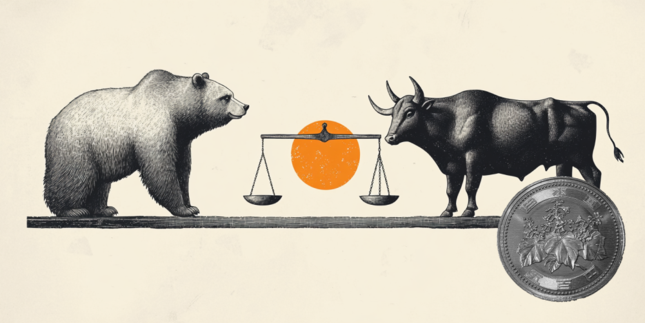EUR/USD Forecast and News
EUR/USD: Powell and the NFP will put the rally to the test
EUR/USD gathered extra steam and advanced to multi-month peaks near 1.1150, although the move fizzled out somewhat as the NA session drew to a close on Thursday.
Latest EUR News
EUR/USD Technical Overview
EUR/USD’s immediate upside is capped by the 2025 peak at 1.1145 (April 3), ahead of the round level at 1.1200 and the 2024 high at 1.1213 (September 25).
On the other hand, the pair finds its first layer of support at the weekly low of 1.0732 (March 27), in tandem with the 200-day SMA. A clear break beneath this zone could open the door for a deeper correction toward the provisional 55-day SMA at 1.0594.
The Relative Strength Index (RSI) has climbed past 70, entering the overbought region, while an Average Directional Index (ADX) reading above 28 suggests moderate overall trend strength.
Fundamental Overview
The Euro (EUR) once again finds its footing, pushing beyond the 1.1100 mark against the US Dollar (USD) for the first time since October 2024. Indeed, EUR/USD advanced to the 1.1150 region—multi-month highs—on the back of the acute downside pressure on the Greenback, driving the US Dollar Index (DXY) to the low-101.00s as investors continued to digest President Trump’s “Liberation Day.”
Fresh tariffs rattle the EU… and the rest of the world
Back to “Liberation Day”, a new trade plan will impose a baseline 10% tariff on imports from all U.S. trading partners, while layering on additional country-specific levies ranging from 10% to 50%.
Under these rules, China faces a hefty 34% surcharge on top of an existing 20% duty, while the European Union (EU) sees a 20% tariff, the UK 10%, and Japan 24%.
Furthermore, the baseline tariff takes effect on Saturday, April 5, with the more punitive reciprocal rates kicking in on Thursday, April 9.
Glimmers of hope in Eastern Europe
Geopolitical tensions in Eastern Europe have eased somewhat, as Ukrainian President Volodymyr Zelenskiy announced a couple of weeks ago a ceasefire that covers vital energy infrastructure and Black Sea routes—an agreement partially brokered by the United States.
Adding to this cautious optimism, President Trump hinted last week at a possible US-Ukraine mineral revenue-sharing deal, which could pave the way for increased American investment in Ukraine’s energy sector.
Central banks walk a tightrope
The Federal Reserve (Fed) kept rates steady at its last meeting, recognising that ongoing trade disputes could stoke inflation and potentially justify a more hawkish policy. At the same time, early signs of slowing economic growth demand caution. Fed Chair Jerome Powell reiterated a “data-dependent” approach, noting that up to 50 basis points of easing might still be considered this year if the economy deteriorates.
Meanwhile, the ECB lowered its key rate by 25 basis points and hinted at additional easing if uncertainty persists. Fresh projections point to softer growth and stubborn near-term inflation, though policymakers see inflation easing by 2026. ECB President Christine Lagarde warned that a US-EU tariff battle could shave 0.5% off Eurozone GDP, even as she applauded Germany’s fiscal stimulus efforts.
Money markets currently price an 80% chance of a rate cut this month.
It is worth recalling that, on Wednesday, Lagarde stressed that tariffs would have a negative global impact depending on their scope and duration. In addition, Board member Isabel Schnabel noted the significant influence of US policies on Europe, while Robert Holzmann argued that with eurozone inflation easing and current rates not hindering growth, further rate cuts are unnecessary. He also cautioned that a potential trade war could force central banks to consider unconventional measures.
Looking ahead
All eyes remain on any developments related to US trade policy, further developments in Eastern Europe, and fresh signals from both the Fed and ECB. With so many factors in flux, traders will closely track Friday’s speech by Chair Jerome Powell as well as the release of the Nonfarm Payrolls for a sense of where EUR/USD might head next.
SPECIAL WEEKLY FORECAST
Interested in weekly EUR/USD forecast? Our experts make weekly updates forecasting the next possible moves of the Euro-US Dollar pair. Here you can find the most recent forecast by our market experts:

EUR/USD: US Dollar to fall further despite ruling uncertainty Premium
The EUR/USD pair remained under selling pressure for a second consecutive week but ended it little changed at around 1.0820. The US Dollar (USD) remained trapped between tariff-related concerns and tepid US data, limiting its safe-haven condition.
EUR/USD Big Picture
EUR/USD Bullish Themes
EUR/USD Bearish Themes
Latest EUR Analysis
Editors' picks

EUR/USD: Powell and the NFP will put the rally to the test
EUR/USD gathered extra steam and advanced to multi-month peaks near 1.1150, although the move fizzled out somewhat as the NA session drew to a close on Thursday.

GBP/USD takes a hard rejection from fresh highs, but holds on the bullish side
GBP/USD briefly clipped the 1.3200 handle for the first time in six months on Thursday, climbing into fresh highs as the Greenback turns sour across the board. The Trump administration’s “reciprocal” tariffs and a flat tariff have kicked the legs out from beneath market sentiment, despite a delayed reaction to tariff announcements that came after US markets closed on Wednesday.

USD/JPY holds recovery near 146.00; upside seems limited ahead of US NFP
USD/JPY trades close to 146.00, holding its recovery in the Asian session on Friday. Investors dial down bets of aggressive BoJ rate hikes, amid worries that Trump's new tariffs could negatively impact Japan's economy, helps the pair sustain its latest upswing. But buyers remain wary ahead of US NFP and Powell.

Gold turns south toward $3,100, all eyes on US NFP and Powell
Gold price returns to the red, eyeing $3,100 again in the Asian session on Friday after facing some profit-taking in the previous session. Escalating concerns over a global trade war and a US recession boost the Gold price, a traditional safe-haven asset. The focus now stays on the US NFP data and Powell's speech.

WTI drops below $67 on demand concerns, OPEC+ output hike
Crude oil prices decline sharply on Thursday, pressured by growing concerns over the demand outlook following US President Donald Trump's tariff announcements and OPEC+ decision to increase oil output.
Majors
Cryptocurrencies
Signatures
EUR/USD Yearly forecast
How could EUR/USD move this year? Our experts make a EUR/USD update forecasting the possible moves of the euro-dollar pair during the whole year. Don't miss our 2025 EUR/USD forecast!
EUR/USD FORECAST 2025
In the EURUSD 2025 Forecast, our analyst, Valeria Bednarik, says the EUR/USD pair is ending a third consecutive month in the red and technical readings in the monthly chart suggest 2025 will be a tough year for the Euro. The macroeconomic picture favors the USD over the EUR, as with even inflationary pressures, the focus will be on economic developments. Read more details about the forecast.
The pair traded as low as 1.0334 and as high as 1.1214 throughout 2024, with currencies moving on sentiment.
MOST INFLUENTIAL POLITICAL EVENTS IN 2025 FOR EUR/USD
Generally speaking, a Republican victory is seen as positive for financial markets. Wall Street rallied, with the three major indexes hitting record levels amid Trump’s pledge to cut taxes and impose tariffs on foreign goods and services. Tariffs, if implemented, could mean higher prices for Americans in a wide spectrum of goods and services. Worth adding that his tariffs policy could also spread into other major economies.
The Fed signaled a cautious stance on rate cuts in 2025, projecting only two reductions as inflation remains above target and economic growth stays solid.
Influential Institutions & People for the EUR/USD
The Euro US Dollar can be seriously affected by news or the decisions taken by two main central banks:
The European Central Bank (ECB)
The European Central Bank (ECB) is the central bank empowered to manage monetary policy for the Eurozone and maintain price stability, so that the euro’s purchasing power is not eroded by inflation. The ECB aims to ensure that the year-on-year increase in consumer prices is less than, but close to 2% over the medium term. Another of its tasks is one of controlling the money supply. The European Central Bank’s work is organized via the following decision-making bodies: the Executive Board, the Governing Council and the General Council. Christine Lagarde is the President of this organism.
ECB Official Website, on Twitter and YouTube
The Federal Reserve Bank (Fed)
On the other
FED Official Website, on Twitter and Facebook
Christine Lagarde
Christine Lagarde was born in 1956 in Paris, France. Graduated from Paris West University Nanterre La Défense and became President of the European Central Bank in November 1st 2019. Prior to that, she served as Chairman and Managing Director of the International Monetary Fund between 2011 and 2019. Lagarde previously held various senior ministerial posts in the Government of France: she was Minister of the Economy, Finance and Industry (2007–2011), Minister of Agriculture and Fishing (2007) and Minister of Commerce (2005–2007).
Lagarde on ECB'S Profile and Wikipedia
Jerome Powell
Jerome Powell took office as chairman of the Board of Governors of the Federal Reserve System in February 2018, for a four-year term ending in February 2022. His term as a member of the Board of Governors will expire January 31, 2028. Born in Washington D.C., he received a bachelor’s degree in politics from Princeton University in 1975 and earned a law degree from Georgetown University in 1979. Powell served as an assistant secretary and as undersecretary of the Treasury under President George H.W. Bush. He also worked as a lawyer and investment banker in New York City. From 1997 through 2005, Powell was a partner at The Carlyle Group.
Jerome Powell Fed's Profile and Wikipedia
ECB NEWS & ANALYSIS
FED NEWS & ANALYSIS
About EUR/USD
The EUR/USD (or Euro Dollar) currency pair belongs to the group of 'Majors', a way to mention the most important pairs in the world. This group also includes the following currency pairs: GBP/USD, USD/JPY, AUD/USD, USD/CHF, NZD/USD and USD/CAD. The popularity is due to the fact that it gathers two main economies: the European and American (from United States of America) ones. This is a widely traded currency pair where the Euro is the base currency and the US Dollar is the counter currency. Since the EUR/USD pair consists of more than half of all the trading volume worldwide in the Forex Market, it is almost impossible for a gap to appear, let alone a consequent breakaway gap in the opposite direction.
Normally, it is very quiet during the Asian session because economic data that affects the fundamentals of those currencies is released in either the European or U.S. session. Once traders in Europe get to their desks a flurry of activity hits the tape as they start filling customer orders and jockey for positions. At noon activity slows down as traders step out for lunch and then picks back up again as the U.S. comes online. If there is important U.S. data we can expect quiet markets just ahead of the number. U.S. economic news have the ability to either reinforce an existing trend or reverse it depending on by how much it missed or beat expectations with the EUR/USD news. By 5:00 GMT liquidity leaves the market once again as European traders close out positions and head home.
Related pairs
GBP/USD
The GBP/USD (or Pound Dollar) currency pair belongs to the group of 'Majors', a way to mention the most important pairs worldwide. This group also includes the following currency pairs: EUR/USD, USD/JPY, AUD/USD, USD/CHF, NZD/USD and USD/CAD. The pair is also called 'The Cable', reffering to the first Transatlantic cable that was crossing the Atlantic Ocean in order to connect Great Britain with the United States of America. This term was originated in the mid-19th century and it makes GBP/USD one of the oldest currency pairs in the world.
The popularity of the Pound Dollar is due to the fact that represents two strong economies: British and American (from United States of America). The Cable is a widely observed and traded currency pair where the Pound is the base currency and the US Dollar is the counter currency. After the result of the Brexit referendum, where the majority of the British voted to abandon the European Union, GBP/USD has been suffering some turbulence in the Forex market as a consequence of the associated risks of leaving the single market.
USD/JPY
The USD/JPY (or US Dollar Japanese Yen) currency pair is one of the 'Majors', the most important pairs in the world. Japanese Yen has a low interest rate, normally used in carry trades, that's why is one of the most trades currencies worldwide. In the USD/JPY the US Dollar is the base currency and the Japanese Yen is the counter currency. The pair represents American (from United States of America) and Japanese economies.
Trading the USD/JPY currency pair is also known as trading the "ninja" or the "gopher", although this last name is more frequently used when reffered to the GBP/JPY currency pair. The US Dollar Japanese Yen usually has a positive correlation with the following two pairs: USD/CHF and USD/CAD. The nature of this correlation is dued to the fact that both currency pairs also use the US Dollar as the base currency, such as USD/JPY. The value of the pair tends to be affected when the two main central banks of each country, the Bank of Japan (BoJ) and the Federal Reserve Bank (Fed), face serious interest rate differential.